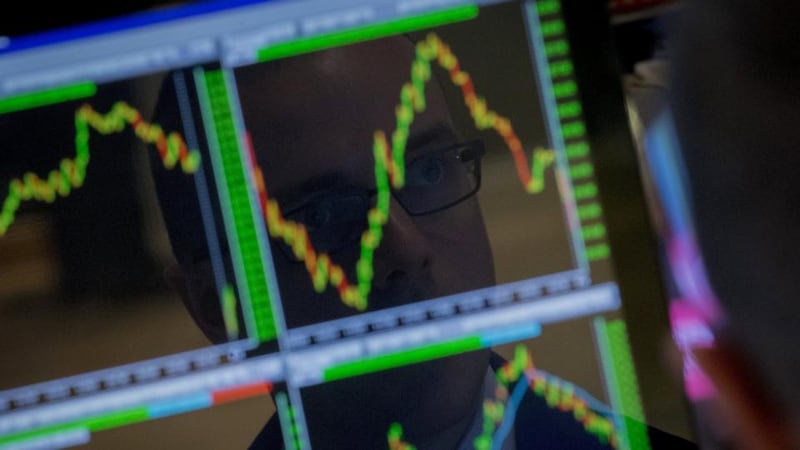After a six-year rally, there are no bargains in the world's biggest stock market. The median company in the cheapest S&P 500 sector – financials – trades on 17.6 times trailing earnings, according to Bloomberg. Over the last 25 years, only once did the cheapest sector command such a high valuation.
Incredibly, 379 of the index’s 500 stocks have increased in price in each of the last six years, according to Bloomberg data, compared with 307 during the famously heady 1990s.
In a low-yield world, investors have been forced into stocks, squeezing valuations everywhere.

Unfortunately, high valuations mean muted future returns. Indeed, pessimistic long-term predictions are no longer the preserve of permabears.
Even Goldman Sachs is cautious, recently projecting annualised returns of just 5 per cent over the next 10 years, roughly half the long-term average.
Almost half that gain is likely to come from dividends, says Goldman.
In other words, 10 years from now, index prices may only be marginally higher than today’s.
Waiting for a pullback
Other strategists, like Deutsche Bank’s
David Bianco
, are more concerned about the near-term picture.
Bianco notes it is now more than 900 trading days since the S&P 500 suffered a 10 per cent correction. On average, corrections have occurred every 357 days. The current run is the third longest since 1960.
Additionally, there has been no 5 per cent dip this year, Bianco says.
Historically, 5 per cent pullbacks are very common, occurring at least once in 51 of the last 54 years.
Obviously, a pullback or correction may well occur. However, while there may be little downside pressure of late, nor is there any upside momentum.
US markets have been asleep for months; the trading range over the last six months has been the narrowest in 10 years.
Bears may feel deprived by stocks’ refusal to wilt, but bulls must feel similarly impatient over the lack of movement.
Bloodbath in China
In contrast, stocks continue to trade in manic fashion in China, plunging by 6.5 per cent last Thursday.
It could have been much worse, given regulators don’t allow individual stocks to fall by more than 10 per cent in a day.
According to state news agency Xinhua, about 600 stocks hit that daily limit.
Analysts were quick to cite various explanatory factors, but they needn’t have bothered.
Indices had soared 16 per cent over the previous fortnight, and momentum-driven markets are prone to severe reversals as well as parabolic ascents. The next obvious catalyst comes on Tuesday, June 9th, when index provider MSCI will announce if domestic Chinese shares are to be added to its global indices.
Any such move would have to be done gradually, given the sheer size of the Chinese market.
Already, it is the world’s largest market in terms of daily stock turnover, which hit a record $380 billion last Thursday.
If China is added to MSCI indices, fund investors everywhere may start keeping a closer eye on Shanghai’s rollercoaster market.
Stigmatising fossil fuel stocks Parliamentarians in Norway have called on the country's $900 billion sovereign wealth fund – the world's largest – to dump its holdings in companies with close commercial ties to the coal industry.
Not everyone is convinced by the fossil fuel divestment thesis.
Some argue funds should engage with companies and encourage them to adopt greener policies, noting that divestment leaves shares exclusively in the hands of investors who do not care about such issues. Others, like Harvard University, believe funds should focus on investing rather than ethics. Others suggest divestment will have little impact on share prices in fuel companies.
Then again, it might. Divestment may lead to stigmatisation, damaging a company’s brand and raising the risk of legislative changes.
So-called sin stocks – for instance, tobacco firms – have seen their share prices affected by societal attitudes, and typically trade at lower valuations.
However, sin stocks have traditionally made for great investments, mainly because their lower valuation multiple leaves them with high dividend yields.
Ironically, Norway’s pension fund, and others like it, may be helping less scrupulous investors to get rich by leaving them with the cheap, high-dividend stocks.
Buy 100 stocks, not one Some investors eschew diversification and stick to a handful of stocks, but analysis from money management firm Alpha Architect indicates they should tread carefully.
After crunching the numbers, it found 63 per cent of individual stocks underperformed the market between 1983 and 2006. Only one in nine stocks would have beaten the market by more than 100 per cent.
Almost three-quarters of stocks more than halved in price at some stage during that period. The 2007-14 figures are similar.
“Buying an individual stock can be risky,” the firm concludes – an understatement if ever there was one, given the sheer grimness of the stats.












